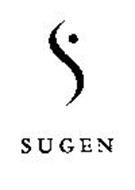预约演示
更新于:2025-12-04
SU5614
更新于:2025-12-04
概要
基本信息
非在研机构- |
权益机构- |
最高研发阶段临床前 |
首次获批日期- |
最高研发阶段(中国)- |
特殊审评- |
关联
100 项与 SU5614 相关的临床结果
登录后查看更多信息
100 项与 SU5614 相关的转化医学
登录后查看更多信息
100 项与 SU5614 相关的专利(医药)
登录后查看更多信息
23
项与 SU5614 相关的文献(医药)2016-02-01·The Journal of antibiotics4区 · 医学
RQN-18690A (18-deoxyherboxidiene) targets SF3b, a spliceosome component, and inhibits angiogenesis
4区 · 医学
Article
作者: Nagai, Koji ; Kaida, Daisuke ; Osada, Hiroyuki ; Kakeya, Hideaki ; Yoshida, Minoru ; Sekiya, Hiromi
Angiogenesis is a complex process involving several distinct and sequential steps such as membrane degradation, migration (chemotaxis), proliferation and formation of capillary tubes in endothelial cells.Abnormal angiogenesis often occurs in pathol. conditions such as cancer, rheumatoid arthritis, diabetic retinopathy and other chronic inflammatory disease.An important step in developing pathol. angiogenesis involves producing vascular endothelial growth factor (VEGF) by normal and tumor cells and the subsequent hyperactivation of downstream signaling pathways in endothelial cells.In addition, VEGF-mediated signaling occurs in tumor cells expressing VEGF receptors, contributing to key aspects of tumorigenesis, including the function of cancer stem cells and tumor initiation.3.Thus, inhibition of angiogenesis via VEGF-mediated pivotal signaling has been considered a promising strategy for the treatment of angiogenesis-related diseases including cancer.We previously discovered several new angiogenesis inhibitors, epoxyquinols A and B, epoxytwinol A, azaspirene, RK-805 and RK-9511314 from the fungal metabolites, and performed a mode-of-action study.In our continuous screening for angiogenesis inhibitors from microbial origin, we found a potent angiogenesis inhibitor, RQN-18690A (18-deoxyherboxidiene), from the culture broth of Streptomyces sp.QN18690 (Figure 1).Herein we revealed that 18-deoxyherboxidiene inhibits the angiogenic process and targets SF3b, a spliceosome component that is a subcomplex of the U2 small nuclear ribonucleoprotein (snRNP) in the spliceosome.We performed a high-throughput wound-healing screening using human umbilical vein endothelial cells (HUVECs) to identify an effective hit broth.HUVECs (1 × 104 cells) in HuMedia-EG2 (Kurabo, Osaka, Japan) with 0.1% fetal bovine serum (FBS) were plated in a 96-well plate and incubated to confluence in 5% CO2 at 37 °C.The cell monolayer was scratched using a pipet tip.After replacing the medium with fresh medium containing 3.1 ng ml-1 of VEGF (R&D Systems, Minneapolis, MN, USA) to remove cell debris, the test broth or vehicle was added to the cells and VEGF-induced cell motility was observed under a phase contrast microscope (Olympus, Tokyo, Japan).The results showed that the culture broth of Streptomyces sp.QN18690 strongly inhibited the wound-healing process.Et acetate extract of the culture broth (2.5 l) was applied to a silica gel column chromatog. and eluted with CHCl3-MeOH (100:1, 50:1, 20:1, 10:1, 5:1 and 1:1 volume/volume).The eluents with CHCl3-MeOH (50:1) were further purified by RP-HPLC (PEGASIL ODS (Senshu Scientific Co. Ltd., Tokyo, Japan), φ20 × 250 mm, 40% aq to 100% MeCN in a linear gradient, 9.0 mL min-1) to obtain RQN-18690 A (0.5 mg) as a colorless oil, [α]D22=+12.2 (c=0.33, MeOH), UV (MeOH)λmax (log ε) 236 (2.53) nm.The MW was established as C25H42O5 with five degrees of unsaturation by high-resolution FAB-MS (m/z 421.2969 [M-H]-, calculated for C25H41O5, 421.2954).The IR spectrum (neat) showed characteristic absorptions at 3550, 2950, 1700, 1650, 1545, 1505, 1455, 1420 and 1100 cm-1, suggesting the presence of carboxylic acid.The chem. structure of RQN-18690A was unambiguously determined as 18-deoxyherboxidiene by the physico-chem. properties and extensive NMR anal. (Supplementary Table S1).16 As 18-deoxyherboxidiene inhibited VEGF-induced motility in the wound-healing assay, we next examined its inhibitory effect in a HUVECs migration assay using a Chemotaxicell chamber (Kurabo).The chambers were placed in a 24-well plate containing 500 μl HuMedia-EG2 with 0.1% FBS.HUVECs (1 × 105 cells) were incubated on the upper chambers for 30 min and treated with or without 18-deoxyherboxidiene for 1 h.After VEGF (3.1 ng ml-1) stimulation, the cells were allowed to migrate from the upper to lower chamber for 9 h in 5% CO2 at 37 °C.Migrated cells were fixed with CH3OH, stained and counted.As shown in Figure 2a, 18-deoxyherboxidiene inhibited VEGF-induced HUVECs migration in a dose-dependent manner without significant cell toxicity, similar to SU5614, a well-known VEGFR2/PDGFR kinase inhibitor.Cell viability was measured by trypan blue assay (data not shown).We next performed a capillary-like tube formation assay on the Matrigel matrix (BD Biosciences, Bedford, MA, USA).HUVECs (1.5 × 104 cells) were treated with or without 18-deoxyherboxidiene for 16 h in 5% CO2 at 37 °C and the capillary-like tubes were photographed under a phase contrast microscope.HUVECs significantly formed a capillary-like tube form, whereas 18-deoxyherboxidiene attenuated the vessel networks as well as the capillary-like tube formation, as shown in Figure 2b.These results suggest that 18-deoxyherboxidiene exhibits potent antiangiogenic effects in HUVECs.Recently, spliceostatin A (SSA, a stable methyl-ketal derivative of FR901464),17 pladienolide18 and herboxidiene (GEX1A),19 which have a reactive epoxide group, were shown to have a spliceosome inhibitory activity.SSA inhibits in vitro splicing and promotes pre-mRNA (mRNA) accumulation by binding to spliceosome-associated protein (SAP) 130 or SAP155, a subunit of SF3b in the spliceosome.Pladienolide and herboxidiene bind to SAP130 and SAP155, resp.We therefore tested the effect of 18-deoxyherboxidiene on the binding to spliceosome using a biotinylated SSA (b-SSA).HeLa cell extracts (300 μg per assay) pretreated with or without 18-deoxyherboxidiene were incubated with b-SSA for 6 h at 4 °C.17 After UltraLink immobilized streptavidin plus (Thermo Fisher Scientific, Waltham, MA, USA) was added, the mixture was further incubated for 1 h at 4 °C.The bound proteins were separated by SDS-PAGE and analyzed by western blotting anal. using anti-SAP130 (Abcam, Cambridge, UK), anti-SAP145 (Santa Cruz Biotechnol., Dallas, TX, USA) and anti-SAP155 (Medical & Biol. Laboratories, Nagoya, Japan) antibodies.As shown in Figure 3a, each SAP130, SAP145 and SAP155 subunit was detected as a b-SSA-binding protein, whereas 18-deoxyherboxidiene abolished this binding in a dose-dependent manner, similar to the effect of SSA, indicating that 18-deoxyherboxidiene targets SF3b.We next examined the effect of 18-deoxyherboxidiene on pre-mRNA translation in p27-int-HA-transfected human embryonic kidney (HEK) 293 T cells, according to the previous report.17 The p27-int-HA reporter system contains a hemagglutinin (HA) tag sequence before the in-frame termination codon in intron 1 and a Myc tag sequence before the termination codon in exon 2 in the gene encoding p27, a CDK inhibitor protein.This system enables us to detect p27-myc and p27*-HA proteins as proteins translated from correctly spliced or unspliced mRNA, resp. p27-int-HA-transfected HEK 293 T cells treated with carrier solvent (MeOH) produced only the Myc-containing protein p27-Myc (Figure 3b). 18-Deoxyherboxidiene induced cells to generate the HA-tagged protein p27*-HA in addition to the p27-Myc form, although the induction effect of 18-deoxyherboxidiene on p27*-HA protein translation was weaker than that of SSA.These results suggest that 18-deoxyherboxidiene induces not only to accumulation of unspliced mRNA but also its translation to generate p27* by targeting SF3b.SSA also blocks angiogenesis by inhibiting global gene expression including VEGF, exhibiting a potent antitumor activity.20 Very recently, heroboxidiene was reported to attenuate tumor angiogenesis through the dual inhibition of VEGF-mediated signaling and hypoxia-inducible factor (HIF)-1α mRNA expression.21 In our wound-healing assay, the inhibitory activity of 18-deoxyherboxidiene was ca. 10 times weaker than that of heroboxidiene (data not shown).Small mols. targeting SF3b would exert antiangiogenic activity, as structurally different herboxidienes as well as SSA has a strong antiangiogenic activity.Targeting the spliceosome by small-mol. inhibitors is emerging as a promising strategy to treat cancer by intercepting the splicing pathway.22, 23, 24 This splicing process is catalyzed by the spliceosome, which is composed of five snRNPs (U1, U2, U4, U5 and U6) and over 150 associated proteins.25 In particular, SF3b, a subcomplex of the U2 snRNP is a common target for splicing inhibitors such as SSA, pladienolide, herboxidiene and also 18-deoxyherboxidiene.In summary, we have identified RQN-18690A (18-deoxyherboxidiene) from Streptomyces sp.QN18690 as a promising angiogenesis inhibitor, and revealed that 18-deoxyherboxidiene targets SF3b both in vitro and in vivo.Further structure-activity relationship studies on 18-deoxyherboxidiene as a spliceosome inhibitor would contribute to the development of a new effective anticancer drug.
2015-11-17·Oncotarget
Association of the EGF-TM7 receptor CD97 expression with FLT3-ITD in acute myeloid leukemia
Article
作者: Jacobi, Angela ; Guck, Jochen ; Thiede, Christian ; Bornhäuser, Martin ; Kräter, Martin ; Ehninger, Gerhard ; Oelschlägel, Uta ; Otto, Oliver ; Ortlepp, Claudia ; Wobus, Manja
Internal tandem duplications within the juxtamembrane region of the FMS-like tyrosine kinase receptor FLT3 (FLT3-ITD) represents one of the most common mutations in patients with acute myeloid leukemia (AML) which results in constitutive aberrant activation, increased proliferation of leukemic progenitors and is associated with an aggressive clinical phenotype. The expression of CD97, an EGF-TM7 receptor, has been linked to invasive behavior in thyroid and colorectal cancer. Here, we have investigated the association of CD97 with FLT3-ITD and its functional consequences in AML.Higher CD97 expression levels have been detected in 208 out of 385 primary AML samples. This was accompanied by a significantly increased bone marrow blast count as well as by mutations in the FLT3 gene. FLT3-ITD expressing cell lines as MV4-11 and MOLM-13 revealed significantly higher CD97 levels than FLT3 wildtype EOL-1, OCI-AML3 and HL-60 cells which were clearly decreased by the tyrosine kinase inhibitors PKC412 and SU5614. CD97 knock down by short hairpin RNA in MV4-11 cells resulted in inhibited trans-well migration towards fetal calf serum (FCS) and lysophosphatidic acid (LPA) being at least in part Rho-A dependent. Moreover, knock down of CD97 led to an altered mechanical phenotype, reduced adhesion to a stromal layer and lower wildtype FLT3 expression.Our results, thus, constitute the first evidence for the functional relevance of CD97 expression in FLT3-ITD AML cells rendering it a potential new theragnostic target.
2012-05-15·ISRN dermatology
VEGF Is Involved in the Increase of Dermal Microvascular Permeability Induced by Tryptase
Article
作者: Wang, Li ; Yin, Lianhua ; Bai, Qianming ; Li, Xiaobo ; Wang, Xinhong ; Xu, Yali ; Zhang, Qingyong
Tryptases are predominantly mast cell-specific serine proteases with pleiotropic biological activities and play a critical role in skin allergic reactions, which are manifested with rapid edema and increases of vascular permeability. The exact mechanisms of mast cell tryptase promoting vascular permeability, however, are unclear and, therefore, we investigated the effect and mechanism of tryptase or human mast cells (HMC-1) supernatant on the permeability of human dermal microvascular endothelial cells (HDMECs). Both tryptase and HMC-1 supernatant increased permeability of HDMECs significantly, which was resisted by tryptase inhibitor APC366 and partially reversed by anti-VEGF antibody and SU5614 (catalytic inhibitor of VEGFR). Furthermore, addition of tryptase to HDMECs caused a significant increase of mRNA and protein levels of VEGF and its receptors (Flt-1 and Flk-1) by Real-time RT-PCR and Western blot, respectively. These results strongly suggest an important role of VEGF on the permeability enhancement induced by tryptase, which may lead to novel means of controlling allergic reaction in skin.
100 项与 SU5614 相关的药物交易
登录后查看更多信息
研发状态
10 条进展最快的记录, 后查看更多信息
登录
| 适应症 | 最高研发状态 | 国家/地区 | 公司 | 日期 |
|---|---|---|---|---|
| 肿瘤 | 临床前 | 美国 | - | |
| 肿瘤 | 临床前 | 美国 | - |
登录后查看更多信息
临床结果
临床结果
适应症
分期
评价
查看全部结果
| 研究 | 分期 | 人群特征 | 评价人数 | 分组 | 结果 | 评价 | 发布日期 |
|---|
No Data | |||||||
登录后查看更多信息
转化医学
使用我们的转化医学数据加速您的研究。
登录
或

药物交易
使用我们的药物交易数据加速您的研究。
登录
或

核心专利
使用我们的核心专利数据促进您的研究。
登录
或

临床分析
紧跟全球注册中心的最新临床试验。
登录
或

批准
利用最新的监管批准信息加速您的研究。
登录
或

特殊审评
只需点击几下即可了解关键药物信息。
登录
或

生物医药百科问答
全新生物医药AI Agent 覆盖科研全链路,让突破性发现快人一步
立即开始免费试用!
智慧芽新药情报库是智慧芽专为生命科学人士构建的基于AI的创新药情报平台,助您全方位提升您的研发与决策效率。
立即开始数据试用!
智慧芽新药库数据也通过智慧芽数据服务平台,以API或者数据包形式对外开放,助您更加充分利用智慧芽新药情报信息。
生物序列数据库
生物药研发创新
免费使用
化学结构数据库
小分子化药研发创新
免费使用

